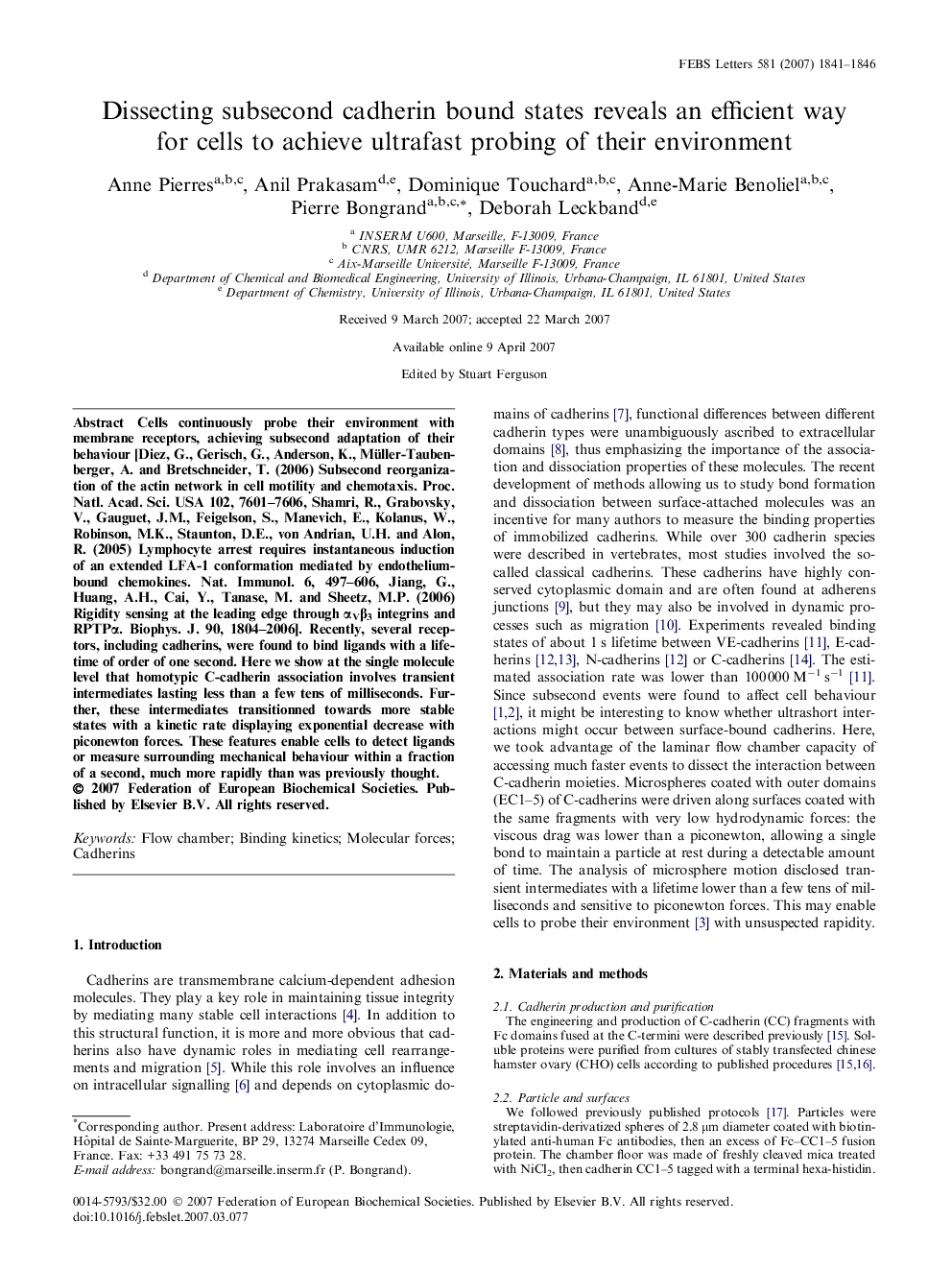| Article ID | Journal | Published Year | Pages | File Type |
|---|---|---|---|---|
| 2050157 | FEBS Letters | 2007 | 6 Pages |
Cells continuously probe their environment with membrane receptors, achieving subsecond adaptation of their behaviour [Diez, G., Gerisch, G., Anderson, K., Müller-Taubenberger, A. and Bretschneider, T. (2006) Subsecond reorganization of the actin network in cell motility and chemotaxis. Proc. Natl. Acad. Sci. USA 102, 7601–7606, Shamri, R., Grabovsky, V., Gauguet, J.M., Feigelson, S., Manevich, E., Kolanus, W., Robinson, M.K., Staunton, D.E., von Andrian, U.H. and Alon, R. (2005) Lymphocyte arrest requires instantaneous induction of an extended LFA-1 conformation mediated by endothelium-bound chemokines. Nat. Immunol. 6, 497–606, Jiang, G., Huang, A.H., Cai, Y., Tanase, M. and Sheetz, M.P. (2006) Rigidity sensing at the leading edge through αVβ3 integrins and RPTPα. Biophys. J. 90, 1804–2006]. Recently, several receptors, including cadherins, were found to bind ligands with a lifetime of order of one second. Here we show at the single molecule level that homotypic C-cadherin association involves transient intermediates lasting less than a few tens of milliseconds. Further, these intermediates transitionned towards more stable states with a kinetic rate displaying exponential decrease with piconewton forces. These features enable cells to detect ligands or measure surrounding mechanical behaviour within a fraction of a second, much more rapidly than was previously thought.
